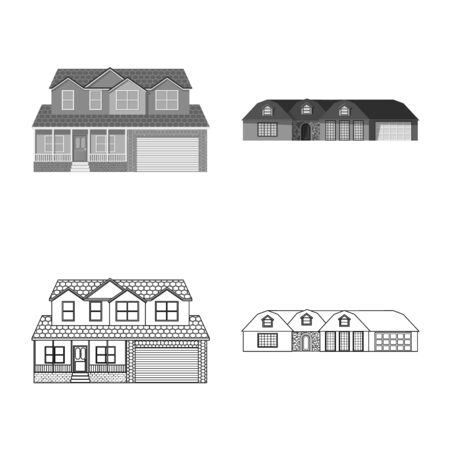1. Assess Your Basement’s Condition and Local Code Requirements
Before you dive into designing or budgeting for your basement finishing project, its important to start with a thorough assessment of your basements current condition and understand the local building codes in your area. This first step helps prevent future issues and ensures a smooth renovation process.
Check for Moisture Problems
Moisture is one of the biggest concerns when it comes to finishing a basement. Even small leaks or damp areas can lead to mold, mildew, and structural damage if not addressed properly. Heres what to look for:
| Area to Inspect | What to Look For | Possible Solutions |
|---|---|---|
| Walls and Floors | Damp spots, peeling paint, white powder (efflorescence) | Install a vapor barrier, apply waterproofing paint, seal cracks |
| Windows | Condensation or water pooling | Improve drainage, replace window wells, seal gaps |
| Sump Pump Area | Signs of overflow or malfunction | Test the pump, install a backup system |
Evaluate Ceiling Height and Structural Elements
Your basement needs adequate ceiling height to meet code requirements and provide livable space. Most U.S. building codes require at least 7 feet of clearance from floor to ceiling. Check for low-hanging pipes, ductwork, or support beams that could reduce usable height.
Things to Check:
- Ceiling height: Measure from floor to the lowest obstruction.
- Foundation walls: Look for cracks or bowing that might indicate structural issues.
- Main support beams and posts: Make sure they’re stable and not deteriorating.
Understand Local Building Codes and Permit Requirements
Every city or county in the U.S. has its own set of building codes that regulate how basements can be finished. These codes cover aspects like electrical wiring, plumbing, egress windows for bedrooms, insulation, fire safety, and more.
How to Find Local Code Information:
- Visit your city or county’s official website (search “building permits [your city]”)
- Call your local building department for guidance on permit requirements
- If youre hiring a contractor, ask them about code compliance—they should be familiar with local rules
Typical Permit Requirements Include:
| Work Type | Permit Needed? |
|---|---|
| Framing new walls | Yes |
| Electrical installation or changes | Yes |
| Plumbing (new bathroom or wet bar) | Yes |
| Patching drywall or painting only | No (usually) |
Taking the time to assess your basement thoroughly and understand local codes will save you headaches down the road. You’ll be starting off on solid ground—literally—and setting yourself up for a successful basement transformation.
2. Create a Functional Layout and Design Plan
Before you start framing walls or picking out paint colors, it’s important to decide how you want to use your finished basement. The purpose of the space will guide the entire design and layout process. Whether youre dreaming of a cozy home theater, a quiet home office, or an extra bedroom for guests, each function comes with different layout needs.
Determine the Purpose of Your Basement
Start by identifying your primary goal for finishing the basement. This step helps you allocate space properly and ensures that the design supports your lifestyle. Below is a quick reference table to help you visualize common basement uses and their key considerations:
| Basement Use | Key Features | Design Tips |
|---|---|---|
| Home Office | Quiet area, built-in desk, storage | Add soundproofing; include strong Wi-Fi coverage |
| Guest Bedroom | Egress window, closet space | Follow local building codes for emergency exits |
| Media Room | Theater lighting, surround sound, blackout curtains | Use acoustic panels and low-light fixtures |
| Playroom | Soft flooring, open space, toy storage | Create clear zones for activities and safety |
| Home Gym | Padded flooring, mirrors, ventilation | Add ceiling height clearance for equipment use |
Create a Rough Floor Plan
You don’t need fancy software to start—just sketch your ideas on graph paper or use free online tools. Divide the basement into zones based on the functions you identified. Be sure to leave enough room for walkways and consider how people will move through the space.
Tips for Smart Space Planning:
- Maximize usable space: Place storage in less trafficked areas or under stairs.
- Avoid awkward corners: Keep furniture layouts simple and accessible.
- Add flexibility: Use movable dividers or sliding doors if you want multi-use areas.
Think About Lighting and Windows
A finished basement can feel dark if not properly lit. Since natural light is usually limited underground, youll need to supplement with artificial lighting. Consider installing recessed lights across the ceiling for even distribution. If your basement has windows, plan your layout to take advantage of them—especially if using the space as a bedroom or office.
Egress Window Requirements:
If youre adding a bedroom or any sleeping area, U.S. building codes require an egress window for safety. Make sure its large enough for someone to escape in case of emergency.
The Bottom Line on Design Planning
A solid layout sets the stage for everything else in your basement finishing project. Take time to evaluate how your family will use the space daily. By thinking ahead about purpose, lighting, and flow, you’ll create a basement that’s both beautiful and practical.

3. Set a Realistic Budget and Timeline
One of the most important steps in planning your basement finishing project is setting a realistic budget and timeline. Without a solid plan for costs and time, it’s easy for your project to run over budget or take much longer than expected. Here’s how to break it down.
Establishing Your Budget
Your budget should account for every major expense involved in the project. This includes materials, labor, permits, and unexpected costs that might arise during construction. A good rule of thumb is to add a 10%–20% contingency to your total estimated cost to cover surprises like water damage or outdated electrical work.
Sample Budget Breakdown
| Category | Estimated Cost |
|---|---|
| Materials (drywall, flooring, lighting, etc.) | $8,000 – $15,000 |
| Labor (contractors, electricians, plumbers) | $10,000 – $25,000 |
| Permits and Inspections | $500 – $2,000 |
| Furnishings and Fixtures | $1,000 – $5,000 |
| Contingency Fund (10–20%) | $2,000 – $6,000 |
| Total Estimated Budget Range | $21,500 – $53,000 |
Create a Realistic Timeline
A clear timeline helps keep your project on track and avoids unnecessary delays. Be sure to consider how long each phase will take—from demolition all the way through final inspection—and build in extra time for any unexpected issues.
Main Project Phases with Time Estimates
| Phase | Description | Estimated Duration |
|---|---|---|
| Planning & Design | Create layout plans and select materials. | 1–2 weeks |
| Pemits & Approvals | Apply for necessary building permits. | 1–3 weeks (varies by location) |
| Demolition & Prep Work | Tear out old materials; prep space. | 1 week |
| Framing & Electrical/Plumbing Rough-Ins | Add walls and install basic systems. | 2–3 weeks |
| Drywall & Finishing Work | Tape, mud, sand drywall; paint walls. | 2–3 weeks |
| Flooring & Trim Installation | Add baseboards and flooring materials. | 1–2 weeks |
| Total Time Estimate: | Around 8–12 weeks (depending on scope) | |
Tips for Staying on Budget and Schedule
- Get multiple quotes: Compare prices from different contractors before making a decision.
- Avoid last-minute changes: Changing your design mid-project can lead to delays and extra costs.
- Create a payment schedule: Pay in phases as work is completed to keep everyone accountable.
- Simplify where possible: Opt for standard finishes instead of custom ones to save money and time.
- Keeps tabs weekly: Check progress every week to ensure everything stays on track.
A well-thought-out budget and timeline are the backbone of any successful basement finishing project. Taking time now to plan carefully will help you avoid stress later and keep your renovation smooth from start to finish.
4. Hire the Right Professionals or Plan a DIY Approach
Before jumping into your basement finishing project, its important to decide whether you want to hire professionals or take the do-it-yourself (DIY) route. Each option has its pros and cons depending on your budget, time, and skill level.
Should You Hire a Contractor or Go DIY?
Ask yourself a few key questions:
- Do I have experience with home improvement projects?
- Do I own the necessary tools and equipment?
- How much time can I realistically dedicate to this project?
- Is my project complex (e.g., plumbing, electrical work)?
Comparison: Hiring a Contractor vs. DIY
| Aspect | Hiring a Contractor | DIY Approach |
|---|---|---|
| Cost | Higher due to labor fees | Lower upfront cost, but may increase if mistakes are made |
| Time Commitment | Faster; managed by professionals | Slower; depends on your availability and pace |
| Skill Requirements | No need for personal expertise | You need to understand construction basics and safety standards |
| Quality Control | Professionally done, often with warranties | Depends on your skills and attention to detail |
If You Choose to Hire a Professional
Make sure you thoroughly research and vet potential contractors. Here’s how:
Steps to Find the Right Contractor:
- Get Recommendations: Ask friends, family, or neighbors for referrals.
- Check Online Reviews: Look at Google, Yelp, or Angie’s List for feedback.
- Verify Licensing & Insurance: Ensure they are licensed in your state and carry liability insurance.
- Interview Multiple Contractors: Get at least three quotes to compare pricing and communication style.
- Review Past Projects: Ask for photos or references from similar basement jobs.
- Create a Detailed Contract: Include timeline, payment schedule, materials list, and scope of work.
If You Choose the DIY Route
If youre handy and up for the challenge, going DIY can save money—but it requires preparation.
What You’ll Need for a DIY Basement Finish:
- Skills: Carpentry, drywall installation, basic plumbing and electrical knowledge.
- Tools: Power drill, saws, measuring tape, level, hammer, utility knife.
- Permits: Check with your local building department before starting any work.
- YouTube & Tutorials: Plenty of resources are available online to guide you step-by-step.
- Pace Yourself: Break the project into smaller phases so it’s manageable over weekends or evenings.
No matter which path you choose—professional help or DIY—planning carefully will make your basement project smoother and more successful.
5. Choose Materials and Begin Construction
Once your basement layout is finalized and you’ve secured any necessary permits, it’s time to choose the right materials and kick off the construction phase. Basements have unique environmental factors like moisture, limited natural light, and temperature fluctuations, so picking suitable materials is crucial for a long-lasting and comfortable space.
Selecting the Right Materials
Choosing materials designed specifically for basement environments will help prevent issues like mold, warping, or water damage. Here’s a quick guide to the most common material choices:
Recommended Basement-Friendly Materials
| Component | Recommended Materials | Why It Works |
|---|---|---|
| Insulation | Rigid foam boards, spray foam | Mold-resistant and effective in damp conditions |
| Flooring | Vinyl planks, ceramic tile, engineered wood | Moisture-resistant and durable under foot traffic |
| Walls | Mold-resistant drywall (green board), wall panels with vapor barriers | Helps prevent mold growth and handles humidity better than standard drywall |
| Ceilings | Drop ceilings, moisture-resistant drywall | Allows easy access to pipes and wiring; resists sagging from humidity |
Step-by-Step Construction Process
Framing the Basement Walls
Start by framing out the walls using pressure-treated lumber where it contacts concrete. Make sure all walls are square and level. Use metal or wood studs depending on your preference and budget.
Electrical and Plumbing Rough-Ins
If youre adding outlets, lighting, or a bathroom, now is the time to run electrical wiring and plumbing pipes through the framed walls. Always follow local building codes or hire licensed professionals to ensure everything is up to code.
Insulation Installation
Add rigid foam insulation directly onto foundation walls before framing if not already done. Then insulate between wall studs using mineral wool or spray foam for added thermal efficiency and soundproofing.
Drywall Installation
Hang moisture-resistant drywall or paneling over the framed walls. Use screws rather than nails to reduce movement and cracking. Don’t forget to leave small gaps at floor level to prevent water wicking up into the drywall.
Taping, Mudding, and Sanding
Tape all joints with drywall tape, apply joint compound (mud), and sand smooth after drying. This step may require multiple layers for a seamless finish.
Ceiling Installation
If you’re installing a drop ceiling, assemble the grid system first before placing tiles. For drywall ceilings, attach sheets directly to ceiling joists using screws, then finish as you did with the walls.
Flooring Installation
Ensure your concrete slab is clean and dry before laying flooring. Install a vapor barrier if needed based on your material choice. Snap-together vinyl planks or tiles are popular choices for ease of installation and moisture resistance.
Final Touches
Add baseboards, trim, doors, paint, lighting fixtures, and any built-in storage or shelving units to complete the space. Double-check that all utilities are functioning correctly and that the space meets your original vision.
A well-planned construction process using proper materials ensures your finished basement will be safe, cozy, and built to last—even in a challenging underground environment.


